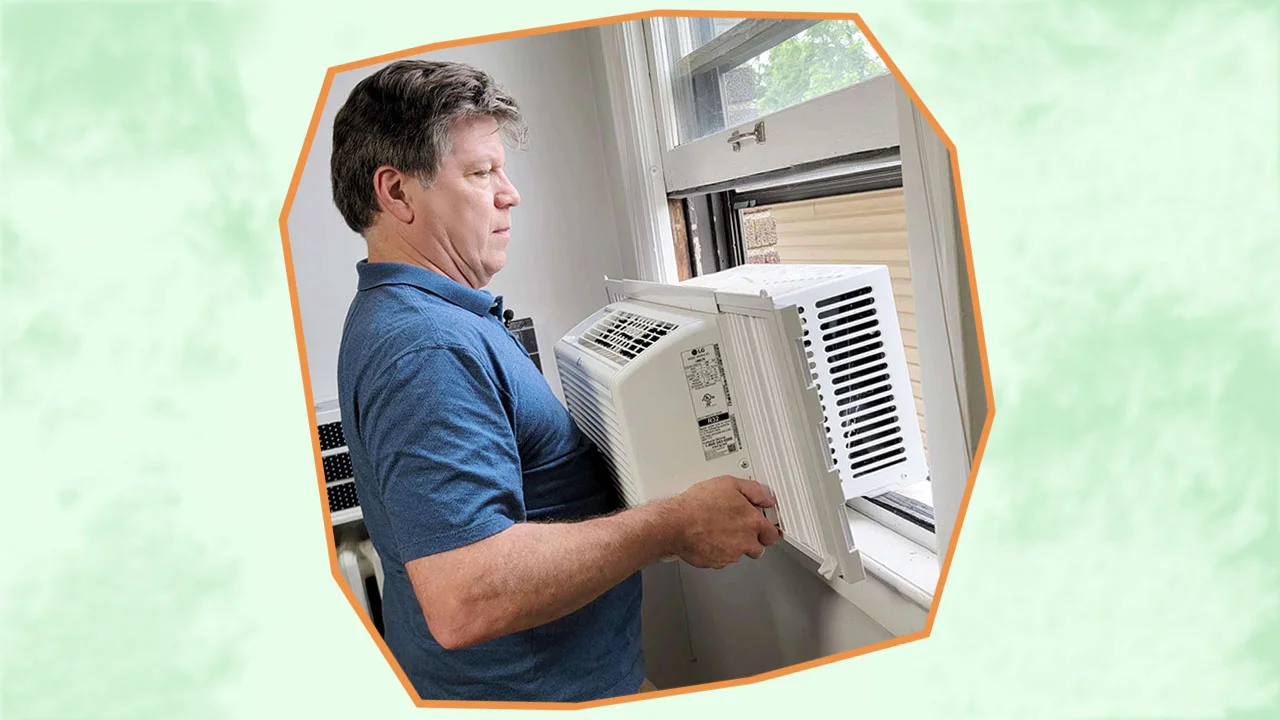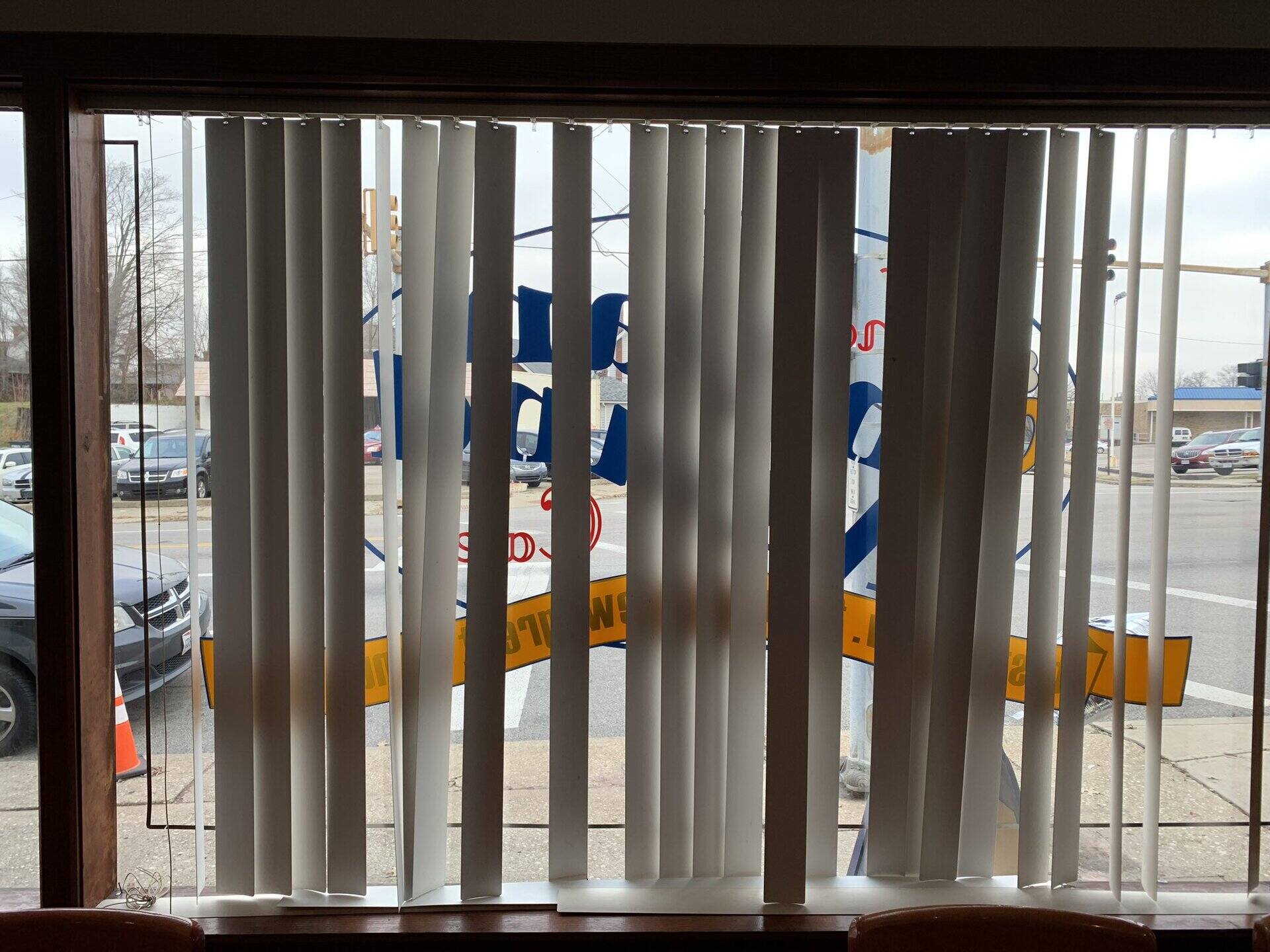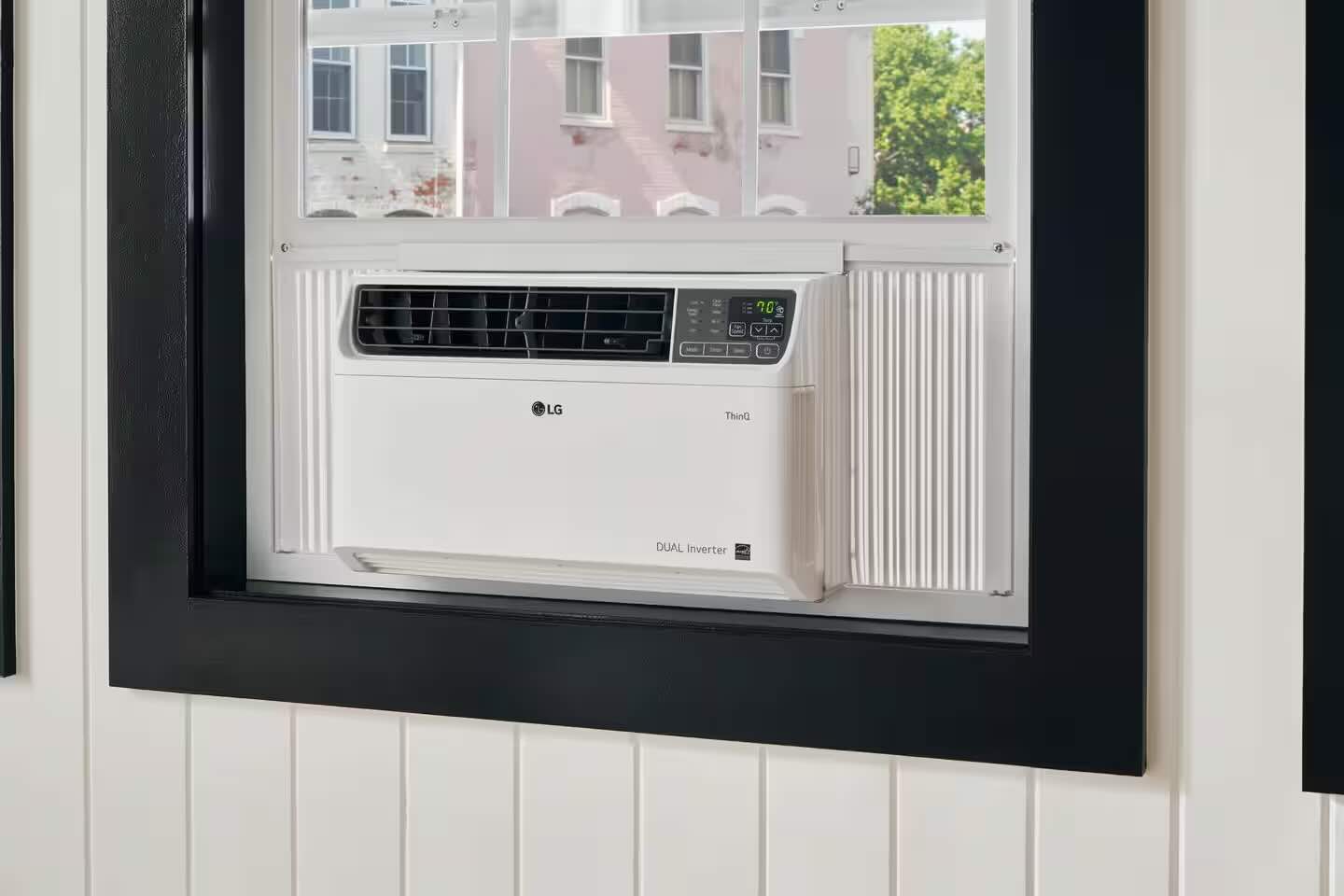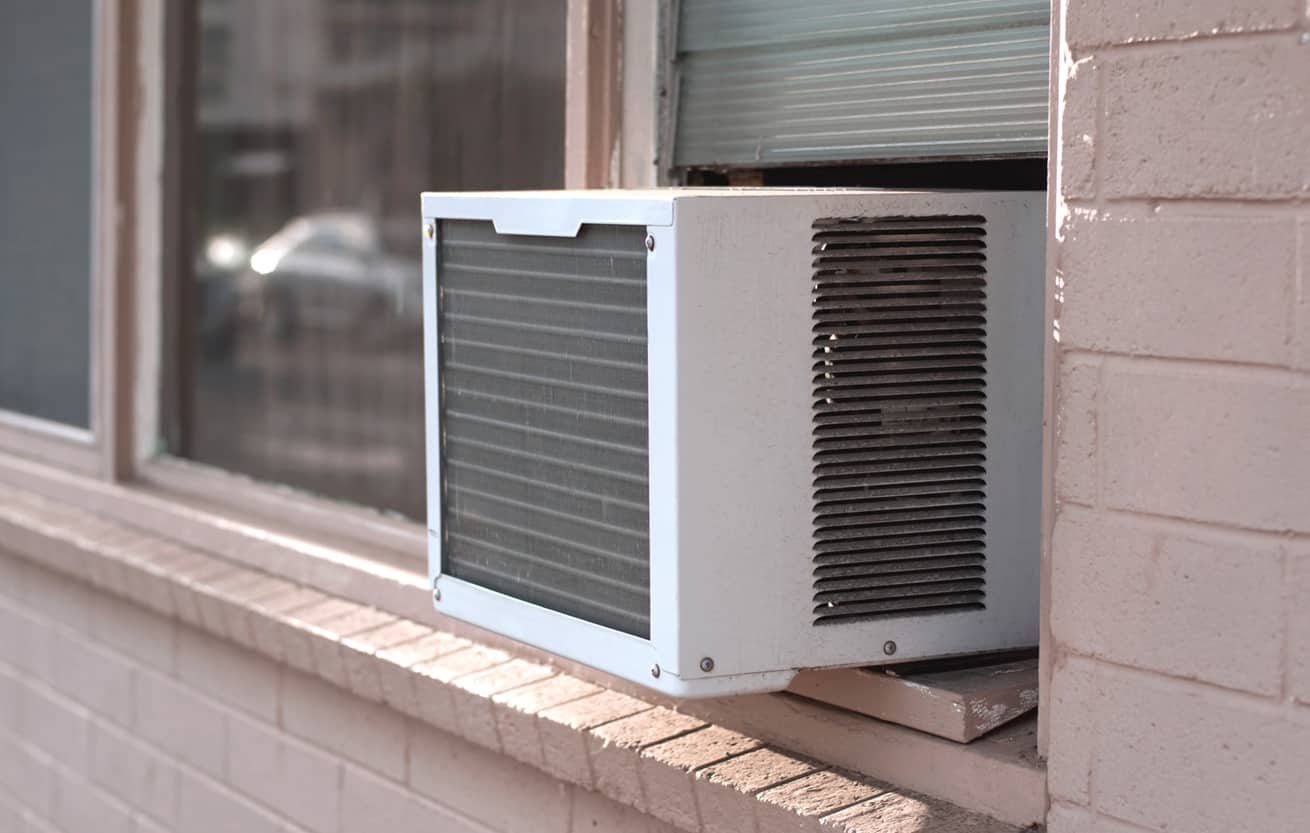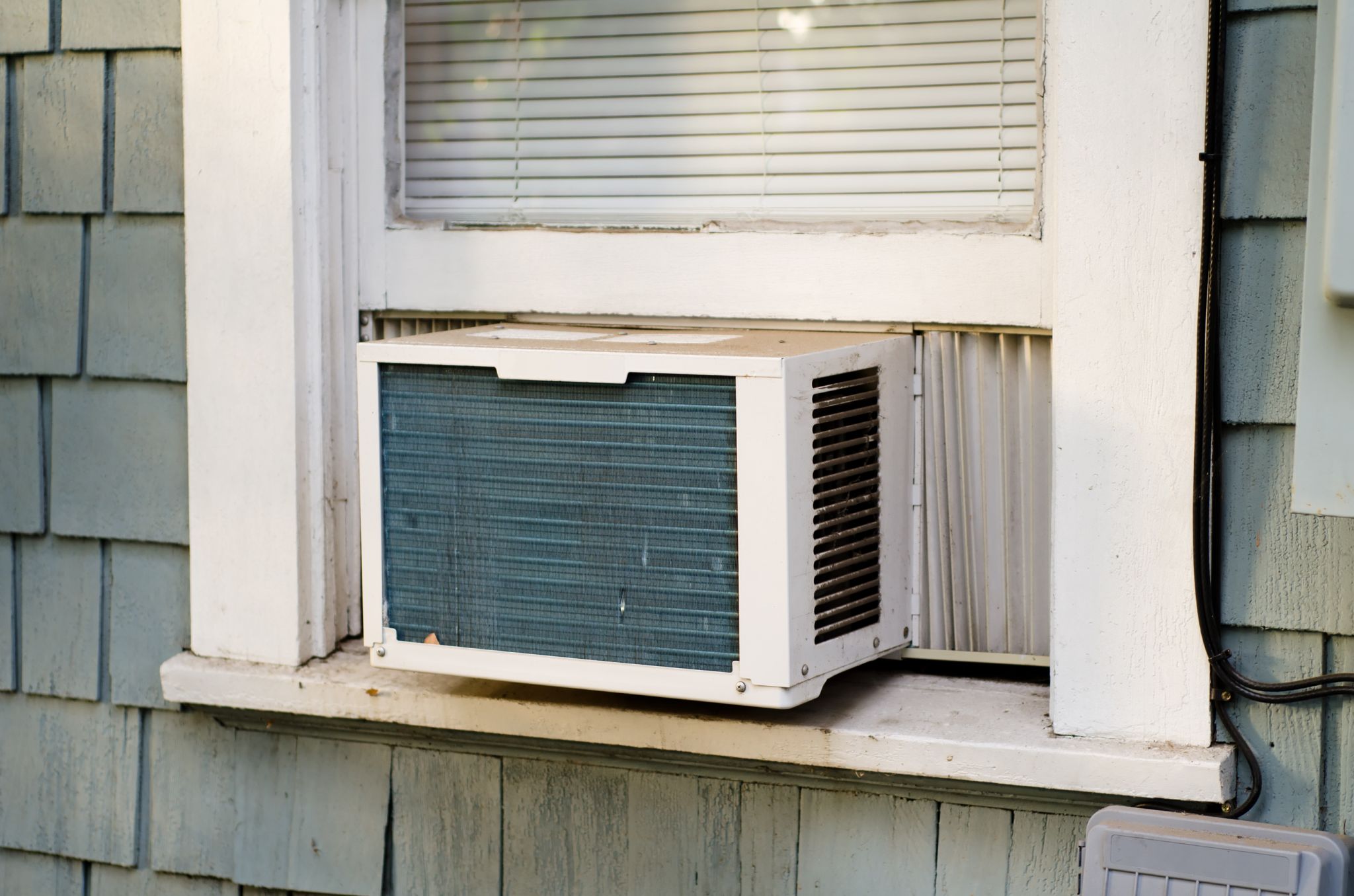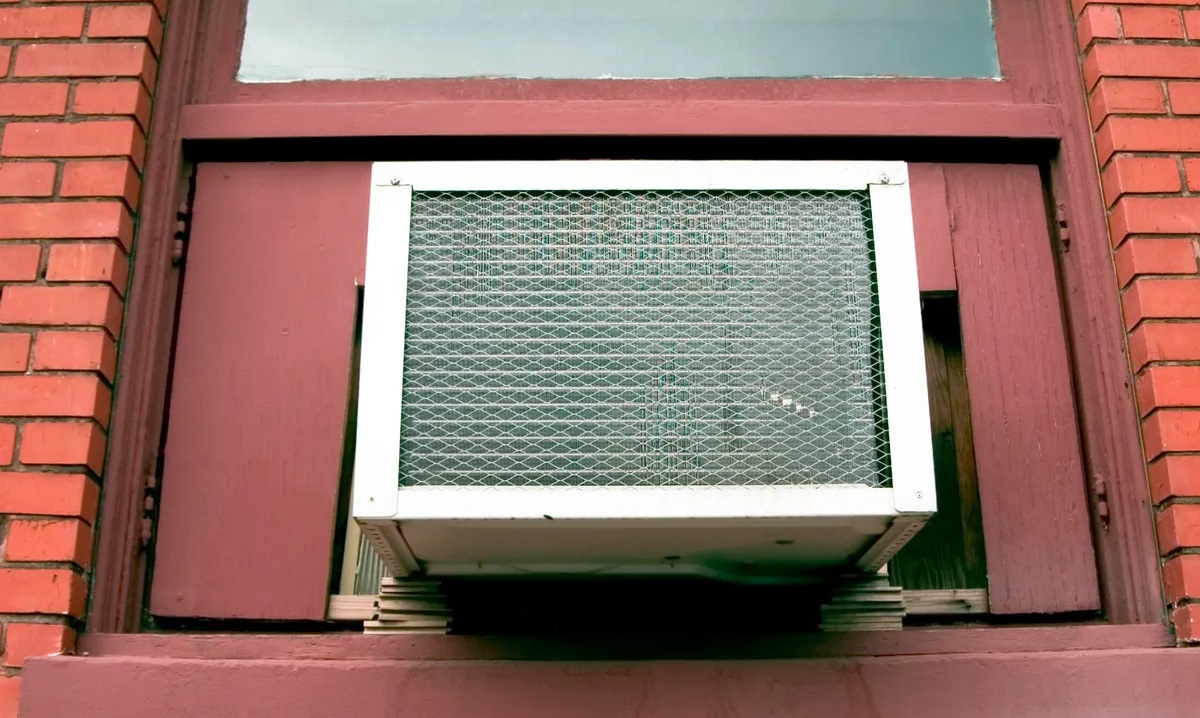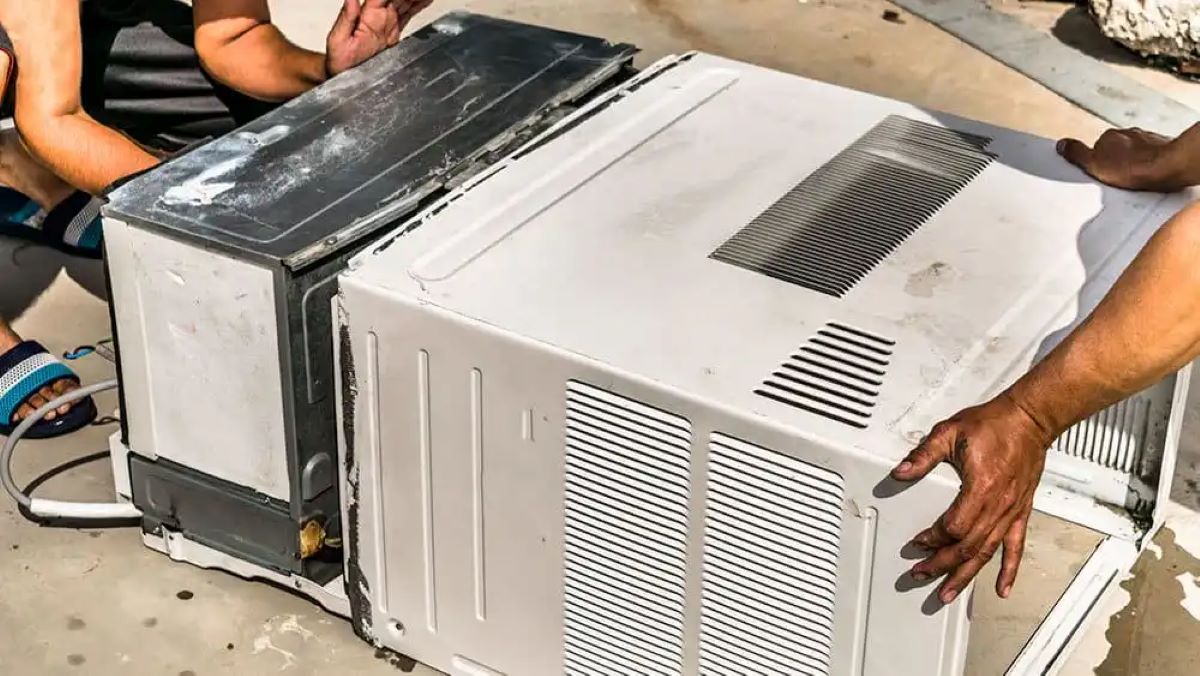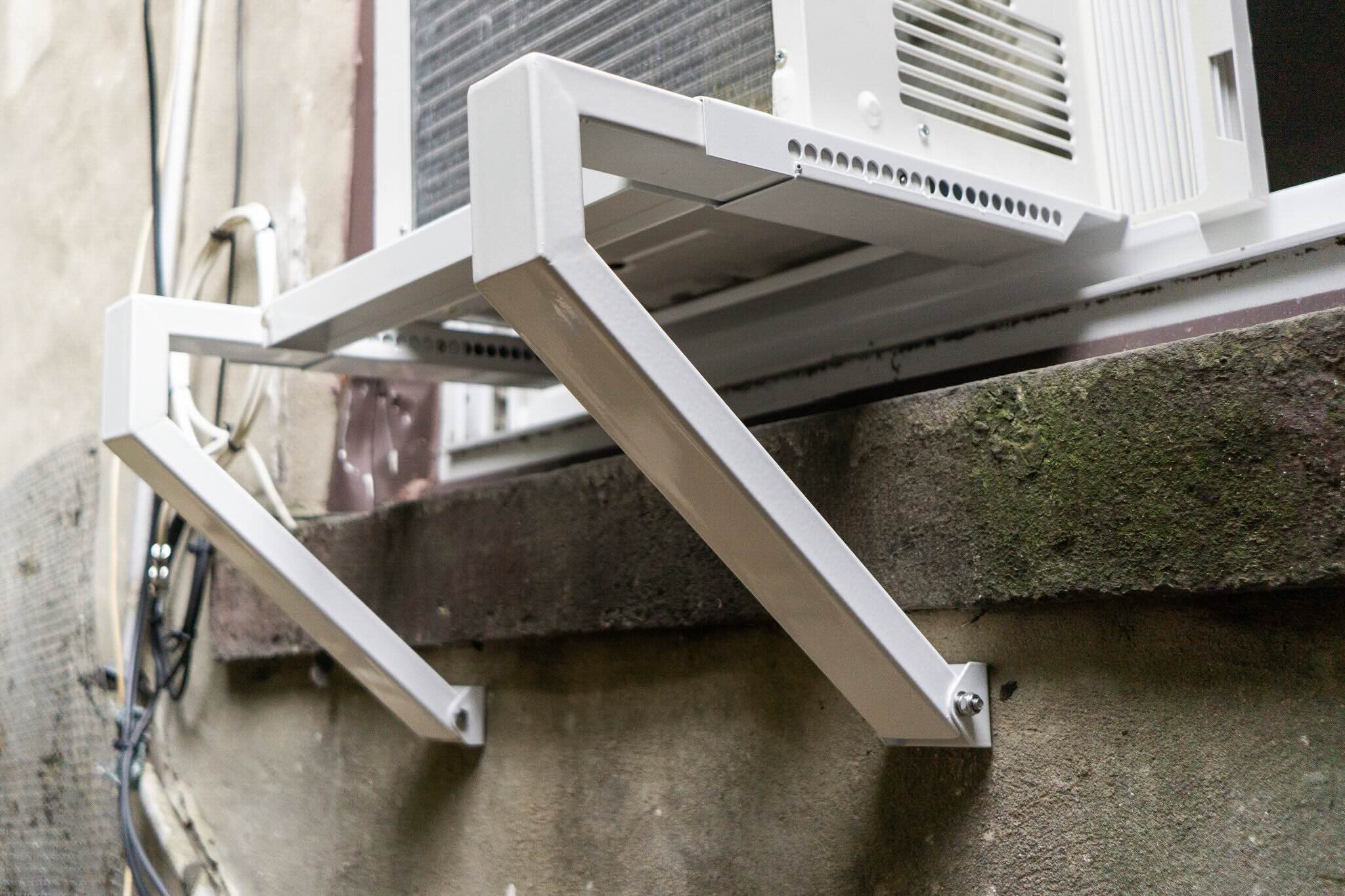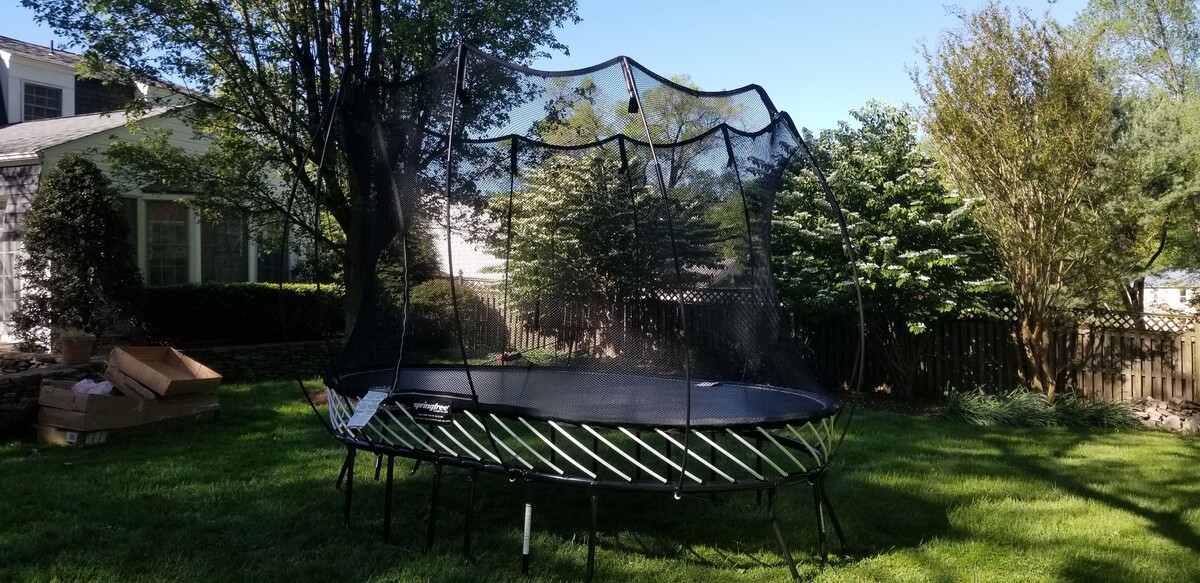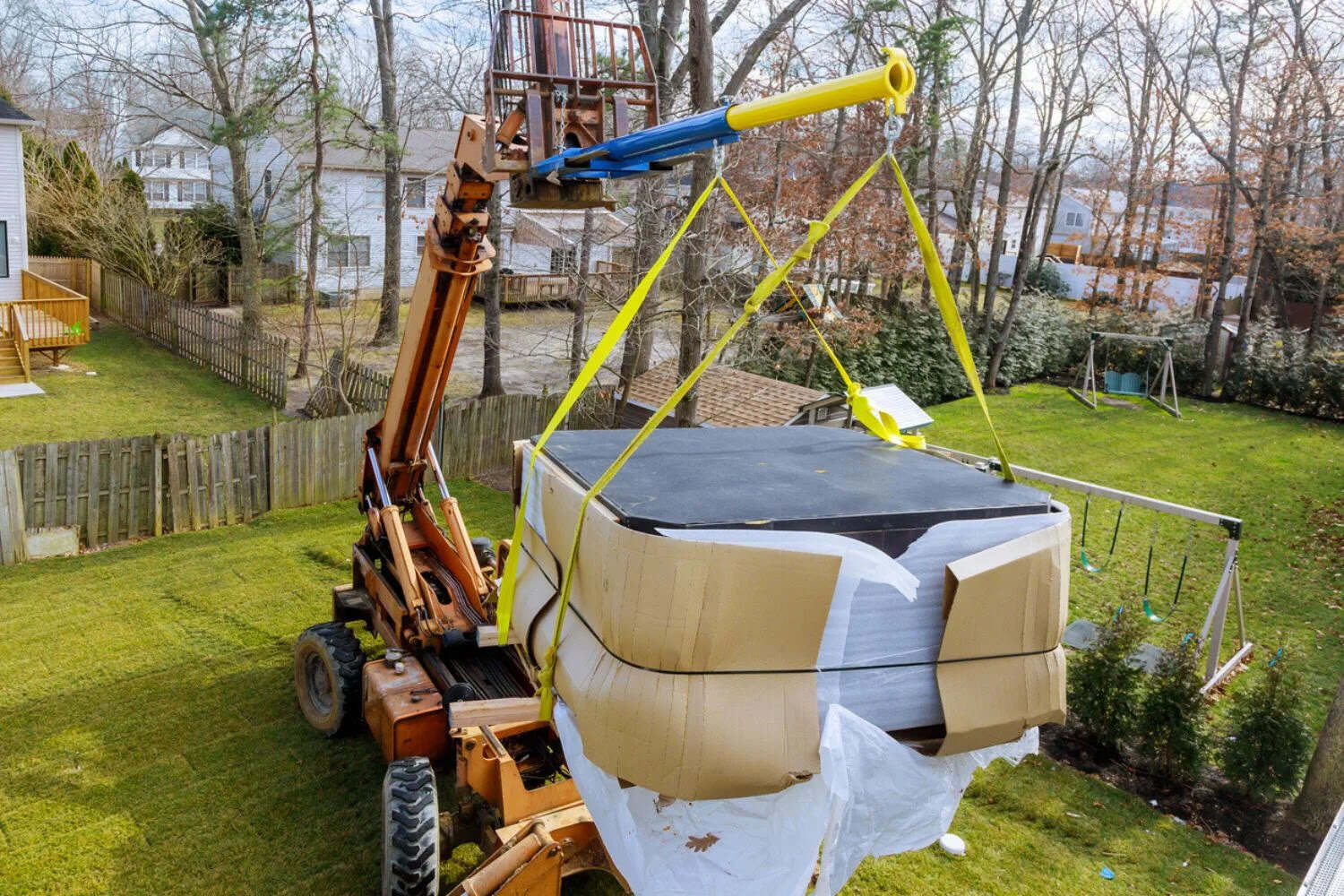Home>Home Maintenance>How To Dispose Of An Old Window Air Conditioner
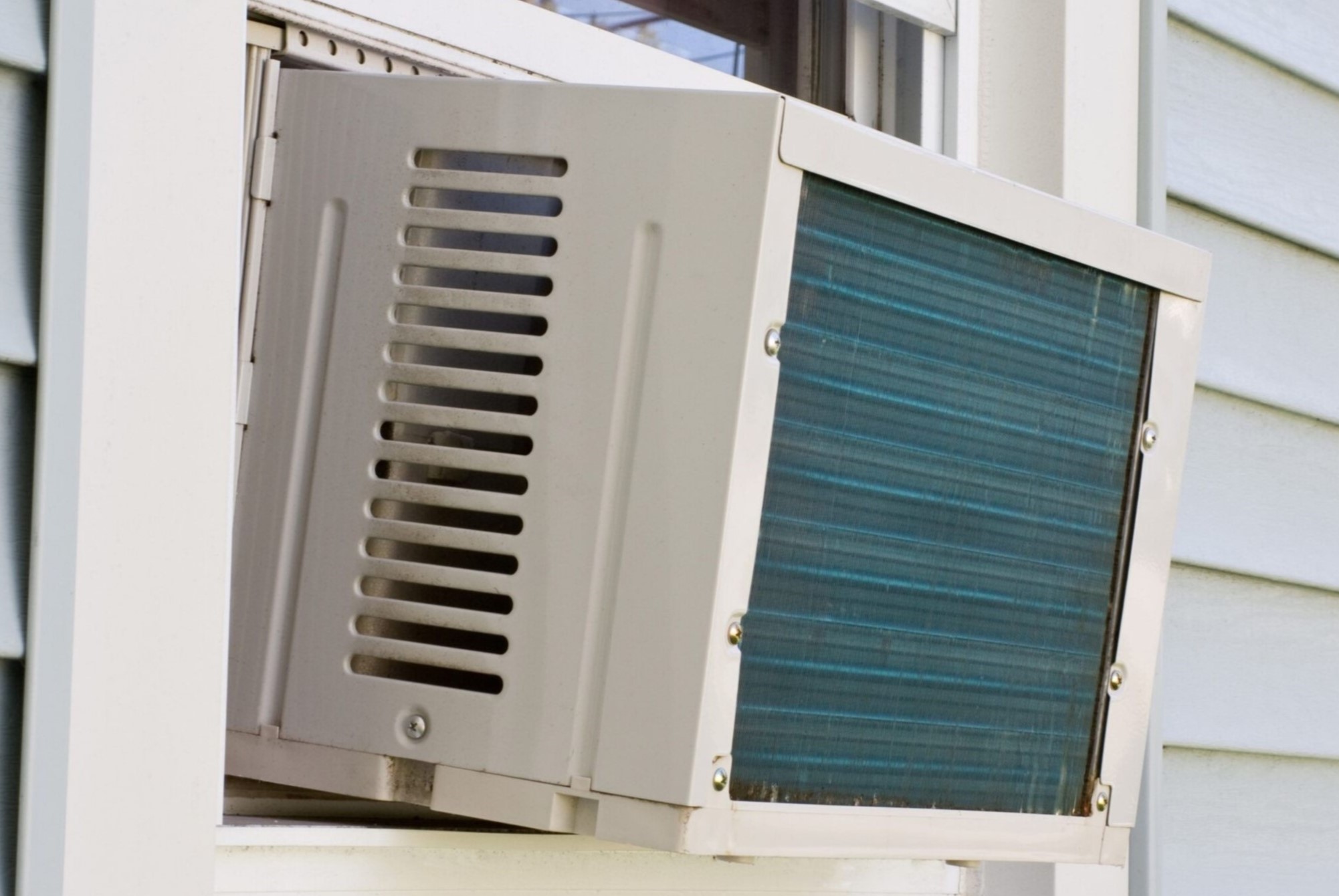

Home Maintenance
How To Dispose Of An Old Window Air Conditioner
Modified: March 7, 2024
Learn how to properly dispose of your old window air conditioner with this step-by-step guide. Keep up with home-maintenance and ensure safe and eco-friendly practices.
(Many of the links in this article redirect to a specific reviewed product. Your purchase of these products through affiliate links helps to generate commission for Storables.com, at no extra cost. Learn more)
Introduction
Window air conditioners are a common sight in many homes. They provide much-needed relief during hot summer days, keeping our living spaces cool and comfortable. However, there may come a time when you need to dispose of an old window air conditioner. Perhaps it is no longer functioning, or maybe you have upgraded to a new and more energy-efficient model. Whatever the reason, it is important to know how to properly dispose of your old air conditioner to ensure both environmental and personal safety.
In this guide, we will walk you through the necessary steps to dispose of an old window air conditioner responsibly. We will cover everything from gathering the necessary tools and equipment to safely transporting the air conditioner and determining the proper disposal method. By following these steps, you can ensure that your old air conditioner is disposed of in an environmentally-friendly manner.
Before we dive into the details, it is important to understand the potential environmental impact of improper air conditioner disposal. Window air conditioners contain refrigerants that can be harmful to the environment, such as chlorofluorocarbons (CFCs) or hydrochlorofluorocarbons (HCFCs). These substances can deplete the ozone layer or contribute to global warming if released into the atmosphere. Therefore, it is crucial that we handle the disposal process with care.
Now that we have addressed the importance of proper disposal, let’s get started with the first step – gathering the necessary tools and equipment.
Key Takeaways:
- Properly disposing of an old window air conditioner involves gathering tools, unplugging the unit, safely removing it from the window, and choosing an environmentally-friendly disposal method.
- After safely transporting the air conditioner, prepare it for disposal by cleaning, labeling, and packaging it. Then, follow local regulations to recycle, donate, or dispose of it responsibly.
Read more: How To Dispose Of Old Glassware
Step 1: Gather necessary tools and equipment
Before you begin the process of disposing of your old window air conditioner, it is essential to gather the necessary tools and equipment. This will help ensure a smooth and efficient disposal process. Here are the items you will need:
- Protective gear: It is important to prioritize your safety during the disposal process. Remember to wear gloves to protect your hands and goggles to shield your eyes from any potential hazards.
- Screwdriver or power drill: Depending on the type of window air conditioner you have, you may need a screwdriver or power drill to remove any screws or fasteners holding it in place. Check the manufacturer’s instructions or examine the unit to determine what tools you will need.
- Dolly or hand truck: Window air conditioners can be heavy and bulky, so having a dolly or hand truck will make it much easier to transport the unit. These tools allow you to wheel the air conditioner rather than having to lift it.
- Utility knife: A utility knife will come in handy for any cutting or trimming that may be required during the disposal process. This could include removing excess packing materials or cutting electrical cords.
- Plastic sheets or drop cloths: When removing the air conditioner from the window, it’s a good idea to have plastic sheets or drop cloths on hand to protect your floors or furniture from any dust or debris that may be dislodged.
- Trash bags or containers: Finally, you will need trash bags or containers to dispose of any smaller parts or components that are not recyclable. Having these readily available will keep the disposal area organized and make the cleaning-up process more convenient.
By ensuring you have all the necessary tools and equipment before starting the disposal process, you can minimize interruptions and potential safety risks. Once you have gathered these items, you are ready to proceed to the next step, which involves turning off and unplugging the air conditioner.
Step 2: Turn off and unplug the air conditioner
Before you can safely remove the old window air conditioner, you need to ensure that it is turned off and unplugged. This step is crucial for both your safety and to prevent any potential damage to the unit or electrical components.
Follow these steps to turn off and unplug your air conditioner:
- Locate the power cord: The power cord is usually located at the back or side of the air conditioner unit. Trace the cord from the unit to the power outlet or wall socket where it is plugged in.
- Turn off the air conditioner: Look for the power switch or control panel on the air conditioner. Depending on the model, it may be labeled as “Power” or have a designated symbol. Switch it off to shut down the unit.
- Unplug the power cord: Firmly grasp the plug at the end of the power cord and gently pull it out of the power outlet. Make sure to hold onto the plug itself rather than pulling on the cord, as this can potentially damage the cord or cause it to fray.
- Double-check for power: As an extra precaution, use a voltage tester or plug in another electronic device to ensure that power is no longer flowing to the air conditioner. This step ensures your safety during the removal process.
By turning off and unplugging the air conditioner, you eliminate the risk of electrical shocks and reduce the chances of any accidental damage while handling the unit. Once the air conditioner is properly disconnected, you’re ready to move on to the next step: removing the air conditioner from the window.
Step 3: Remove the air conditioner from the window
With the air conditioner turned off and unplugged, it’s time to remove it from the window. This step requires some physical effort, so it’s important to take precautions and follow proper techniques to avoid any injuries or damage to the unit or surrounding areas.
Here’s how you can safely remove the air conditioner from the window:
- Clear the surrounding area: Before you begin, ensure that there is enough space around the window area to safely maneuver and remove the air conditioner. Remove any obstacles or furniture that might hinder the process.
- Inspect the unit: Take a moment to inspect the air conditioner for any visible signs of damage or deterioration. Look for loose parts, leaking refrigerants, or any other issues that could pose a safety risk. If you notice any major problems, consult a professional for assistance.
- Release any securing devices: Most window air conditioners are held in place by brackets, screws, or latches. Depending on the type of installation, look for any fasteners that secure the unit to the window frame or sill. Use a screwdriver or power drill to remove these securing devices and release the air conditioner.
- Support the weight: Window air conditioners can be heavy, so it’s important to provide adequate support when removing them. Have a friend or family member assist you by holding the air conditioner from the inside while you work from the outside. Alternatively, use a dolly or hand truck to support the weight as you remove the unit.
- Gently slide the air conditioner out: Begin sliding the air conditioner out of the window frame. Slowly and carefully guide the unit forward, making sure it remains balanced and steady. If the air conditioner is too large to easily slide out, you may need to angle it slightly or remove the window sash for extra clearance.
- Lower the air conditioner safely: When the air conditioner is partially out of the window, ensure that it is supported and carefully lower it to the ground or onto the dolly/hand truck. Avoid any jerky or sudden movements to prevent damage to the unit.
By following these steps, you should be able to safely remove the air conditioner from the window without any issues. However, if you’re unsure about the process or if the unit is particularly heavy or awkwardly placed, it is always advisable to seek assistance from a professional to avoid any accidents or damage.
Now that the air conditioner is removed from the window, we can move on to the next step: safely transporting the air conditioner.
Step 4: Safely transport the air conditioner
After successfully removing the air conditioner from the window, the next step is to safely transport it to the designated disposal area. Since window air conditioners can be heavy and contain delicate components, it is essential to take proper precautions to avoid damage and ensure your safety during transportation.
Follow these guidelines to safely transport the air conditioner:
- Assess the weight and size: Before attempting to move the air conditioner, assess its weight and size. If you feel that it is too heavy or awkward to handle on your own, ask for assistance from a family member, friend, or neighbor. It’s better to have an extra pair of hands to ensure a safe and smooth transport.
- Utilize a dolly or hand truck: If available, use a dolly or hand truck to transport the air conditioner. These tools provide stability and make it easier to move the unit, minimizing the risk of dropping it or straining your muscles. Secure the air conditioner to the dolly or hand truck using straps or bungee cords to prevent it from slipping or falling.
- Choose an appropriate pathway: Plan the pathway you’ll take to transport the air conditioner. Make sure the route is clear of obstacles, including stairs, door thresholds, or narrow passageways. Be cautious of any uneven surfaces that may cause the air conditioner to tip over or become unbalanced during transportation.
- Move slowly and carefully: Take your time when moving the air conditioner. Avoid jerking or sudden movements that could destabilize the unit or cause it to collide with walls or furniture. Move at a slow and steady pace, keeping a firm grip on the air conditioner or the dolly/hand truck handles.
- Protect delicate components: If the air conditioner has any fragile or protruding parts, such as fins or grilles, take extra care to protect them during transportation. Cover these vulnerable areas with a soft cloth or foam padding to prevent any damage or bending.
- Consider additional assistance: For larger or particularly heavy air conditioners, it may be advantageous to seek professional assistance. HVAC technicians or air conditioning service companies have the expertise and equipment to safely transport and handle bulky units, reducing the risk of injury or damage.
Following these steps will help ensure the safe transportation of the air conditioner to its disposal location. Remember, it’s essential to prioritize your safety and protect the unit during transport. Once the air conditioner is securely transported, we can move on to determining the proper disposal method.
Read more: What Is A Window Air Conditioner
Step 5: Determine proper disposal method
Now that you have successfully transported the old window air conditioner, it’s time to determine the proper disposal method. It is crucial to choose the most environmentally-friendly option that complies with local regulations and guidelines for disposing of electronic waste.
Here are a few disposal methods to consider:
- Recycling programs: Check with your local municipality or recycling centers to see if they offer recycling programs for old air conditioners. Many recycling centers have specialized services for handling electronic waste and can safely recycle the materials in the air conditioner, including the metal, plastic, and electronic components.
- Manufacturer or retailer take-back programs: Some air conditioner manufacturers or retailers offer take-back programs for old units. These programs ensure that the air conditioners are properly recycled or disposed of in an environmentally-friendly manner. Check the manufacturer’s website or contact the retailer to inquire about any such programs.
- Donation or resale: If your old air conditioner is still in good working condition, consider donating it to a charitable organization or selling it. Many organizations accept working appliances and distribute them to those in need. Alternatively, you can sell the air conditioner through online marketplaces or local classified ads to someone who may find it useful.
- Electronic waste collection events: Keep an eye out for community electronic waste collection events or hazardous waste disposal days. These events are often organized by local authorities or environmental agencies and provide a safe and centralized location for disposing of electronic items such as air conditioners.
- Professional disposal services: In some cases, you may need to enlist the services of professional disposal companies that specialize in handling electronic waste. These companies are knowledgeable about the proper methods for disposing of air conditioners and will ensure that the unit is recycled or disposed of safely and legally.
It is important to note that improper disposal of an air conditioner, such as throwing it in the regular trash or abandoning it, may not only be harmful to the environment but could also lead to legal consequences. Therefore, it is essential to choose a disposal method that adheres to local regulations and guidelines.
Take the time to research and explore the available options in your area to determine the best and most responsible method of disposing of your old window air conditioner.
Once you have decided on the disposal method, you can move on to the next step, which involves scheduling a pickup or dropping off the air conditioner at the designated location.
Before disposing of an old window air conditioner, make sure to remove any remaining refrigerant by contacting a professional. Then, take it to a recycling center or a facility that handles electronic waste to ensure proper disposal.
Step 6: Schedule a pickup or drop off the air conditioner
After determining the proper disposal method for your old window air conditioner, the next step is to schedule a pickup or drop off the unit at the designated location. The method of disposal you have chosen will determine the appropriate steps to take.
Here are some guidelines to help you schedule a pickup or drop off the air conditioner:
- Contact recycling centers or disposal services: If you have chosen to recycle the air conditioner, reach out to local recycling centers or disposal services that accept electronic waste. Inquire about their pickup or drop-off procedures, any fees or documentation required, and the available dates and times for scheduling a collection or drop-off.
- Check manufacturer or retailer instructions: If the manufacturer or retailer offers a take-back program, refer to their instructions for scheduling a pickup or drop off. They may have specific contact information, forms to fill out, or guidelines to follow for returning the air conditioner.
- Organize transportation: If you’re required to drop off the air conditioner yourself, arrange for transportation. Ensure that you have a suitable vehicle to transport the unit safely. Consider using a pickup truck, SUV, or renting a vehicle if necessary. Secure the air conditioner properly to prevent any damage during transportation.
- Double-check requirements: Before scheduling a pickup or drop off, double-check any specific requirements or restrictions that the recycling center or disposal service may have. They may ask for additional information, such as proof of residence or identification, to ensure compliance with their procedures. It’s important to be prepared and fulfill any necessary obligations.
- Make an appointment: Once you have all the necessary information and have organized transportation, make an appointment or schedule a pickup date and time that is convenient for you. Be punctual and ensure that you adhere to any guidelines or instructions provided.
- Prepare for pickup or drop off: Prior to the scheduled pickup or drop-off, prepare the air conditioner for disposal as per the recycling center or disposal service’s instructions. This may involve securely packaging the unit, removing any batteries, or providing additional information or documentation.
By following these steps and properly scheduling a pickup or drop off, you can ensure that the air conditioner is disposed of in accordance with the chosen disposal method. This way, you can contribute to environmental sustainability and compliance with regulations.
Once the pickup or drop off is scheduled, you can proceed to the next step, which involves preparing the air conditioner for disposal.
Step 7: Prepare the air conditioner for disposal
Before disposing of your old window air conditioner, it’s important to prepare it properly. This step ensures that the unit is safe to handle and helps facilitate the recycling or disposal process. Follow these guidelines to prepare the air conditioner for disposal:
- Remove any remaining accessories or attachments: Take the time to remove any accessories or attachments that might still be connected to the air conditioner. This includes items such as filters, remote controls, or additional hardware. Set these aside as they may require separate disposal or recycling.
- Clean the air conditioner: Give the air conditioner a thorough cleaning to remove any dust, dirt, or debris. Gently wipe down the exterior surfaces and remove any accumulated grime. This step ensures that the unit is presentable and helps prevent the spread of contaminants during transportation or handling.
- Secure loose parts: Check for any loose or detachable parts on the air conditioner. If there are any loose screws, brackets, or panels, make sure to secure them or remove them entirely. This helps prevent any damage to the unit, ensure safe handling, and prevent small parts from becoming a hazard during disposal.
- Disconnect and dispose of the refrigerant: Window air conditioners contain refrigerants that need to be properly disposed of to prevent harm to the environment. Consult with a professional HVAC technician or a licensed refrigeration service to safely remove and dispose of the refrigerant according to local regulations. Do not attempt to remove the refrigerant yourself.
- Label the air conditioner as “For Disposal”: To make it clear to recycling or disposal services that the air conditioner is intended for disposal, label it with a clear and visible marker. This label helps ensure that the air conditioner is directed towards the appropriate processing facilities.
- Package for transportation: Prepare the air conditioner for transportation by securely packaging it. Wrap it in protective materials such as bubble wrap or moving blankets to prevent any further damage during transport. Use tape or straps to keep the packaging secure and tight.
By following these steps, you can ensure that the air conditioner is properly prepared for disposal. This preparation not only promotes safety but also facilitates the recycling or disposal process, making it easier for the designated recycling center or disposal service to handle the unit.
Once the air conditioner is adequately prepared, you can move on to the next step – disposing of the air conditioner properly.
Step 8: Dispose of the air conditioner properly
Proper disposal of your old window air conditioner is essential to ensure environmental responsibility and compliance with regulations. Depending on the disposal method chosen, follow these guidelines to dispose of the air conditioner properly:
- If recycling the air conditioner: If you have opted to recycle the air conditioner, follow the instructions provided by the recycling center or service. This may involve dropping off the unit at a designated recycling facility or scheduling a pick-up. Ensure that you provide any required documentation or fees, if applicable.
- If using a take-back program: If the manufacturer or retailer offers a take-back program, follow their instructions for returning the air conditioner. This often involves dropping off the unit at a designated location or arranging for a pick-up. Comply with any specific requirements or forms they may require.
- If donating or reselling: If the air conditioner is still in working condition and you have chosen to donate or sell it, take the necessary steps to facilitate the process. Clean the unit thoroughly, include any accessories or manuals, and list it for sale or donate it to a charitable organization that accepts working appliances.
- If using an electronic waste collection event: For disposal through an electronic waste collection event, make note of the date and location of the event. Pack the air conditioner securely in preparation for transport. Bring the unit to the designated collection point during the scheduled event timeframe and follow any instructions provided by the organizers.
- If using professional disposal services: If professional disposal services are required, coordinate with the service provider to ensure the air conditioner is collected and disposed of in accordance with regulations. Provide any necessary information, documentation, or prepare the unit as instructed by the disposal service.
By adhering to these disposal guidelines, you can ensure that the air conditioner is disposed of responsibly and in compliance with local regulations. This helps protect the environment from potentially harmful materials and promotes the recycling of valuable resources within the unit.
Remember, improper disposal of an air conditioner can have negative consequences for the environment and may even result in legal repercussions. It’s essential to choose a proper disposal method that aligns with local regulations and guidelines.
After disposing of the air conditioner properly, you can proceed to the final step – cleaning and reinstalling the window.
Read more: How To Insulate A Window Air Conditioner
Step 9: Clean and reinstall the window
After successfully disposing of the old window air conditioner, it’s time to clean and reinstall the window to restore it to its original condition. This step ensures that the window is clean, secure, and ready for future use.
Follow these steps to clean and reinstall the window:
- Clean the window frame: Start by thoroughly cleaning the window frame. Remove any dirt, dust, or debris that may have accumulated during the removal process. Use a damp cloth or a mild cleaning solution to wipe down the frame, ensuring that it is free from any residue.
- Clean the window glass: Next, clean the window glass to remove any streaks or smudges. Use a glass cleaner or a mixture of vinegar and water to achieve a clear and spotless finish. Wipe the glass in a gentle, circular motion for optimal results.
- Inspect the window components: Take a moment to inspect the window components, such as the gasket or stripping, to ensure they are in good condition. Replace any damaged or worn-out parts to ensure proper insulation and a secure fit when reinstalling the window.
- Reinstall the window: Carefully position the window back into its original place. Align it properly, making sure it sits level and securely in the window frame. If necessary, refer to the manufacturer’s instructions or seek assistance to ensure that the window is installed correctly.
- Secure the window: Once the window is in position, secure it using any brackets, screws, or latches provided. Ensure that the window is tightly sealed and that there are no gaps or drafts. This will help maintain energy efficiency and prevent any air or water leaks.
- Test the window: Finally, test the window to ensure that it opens and closes smoothly. Check if the locking mechanism works properly and that the window remains securely in place. Make any necessary adjustments to ensure optimal functionality.
By following these steps, you can clean and reinstall the window after removing the old air conditioner. This ensures that the window is in good condition and ready to provide proper insulation and security.
Remember, proper installation and maintenance of the window are essential for energy efficiency and comfort in your home.
Congratulations! You have successfully completed all the steps for disposing of an old window air conditioner and restoring your window. By responsibly disposing of the air conditioner and taking care of your window, you have contributed to environmental sustainability and enhanced the comfort of your living space.
Keep in mind that these steps may vary depending on the specific model of your window air conditioner and local regulations. Always consult the manufacturer’s instructions and follow local guidelines when handling and disposing of electronic waste.
Thank you for taking the necessary steps to dispose of your old window air conditioner responsibly. Your efforts make a difference!
Conclusion
Disposing of an old window air conditioner may seem like a daunting task, but by following the proper steps, you can ensure it is done responsibly and with minimal environmental impact. This comprehensive guide has provided you with a step-by-step process for safely disposing of your old air conditioner, from gathering the necessary tools to cleaning and reinstalling the window.
Throughout the disposal process, it’s crucial to prioritize safety and adhere to local regulations. Always wear protective gear when handling the air conditioner, and consult professionals for tasks such as refrigerant removal. Moreover, be sure to choose an appropriate disposal method that aligns with local guidelines, such as recycling programs, take-back initiatives, or electronic waste collection events.
By disposing of your old air conditioner properly, you contribute to environmental sustainability by preventing harmful substances from entering the landfills and reducing the demand for new resources. Additionally, donating or reselling the unit provides an opportunity for someone else to benefit from its functionality, promoting a circular economy
Remember, each step plays a crucial role in ensuring a smooth disposal process. Take the time to gather the necessary tools and equipment, turn off and unplug the air conditioner, remove it from the window using caution, and safely transport it to the designated disposal location. Determine the proper disposal method based on your situation, whether it be recycling, take-back programs, donation, or professional disposal services. Finally, clean and reinstall the window to maintain its functionality and energy efficiency.
Thank you for taking the initiative to dispose of your old window air conditioner responsibly. By caring for our homes and the environment, we can make a positive impact on the world around us. So, let’s continue to prioritize sustainability and responsible disposal practices in our everyday lives.
Frequently Asked Questions about How To Dispose Of An Old Window Air Conditioner
Was this page helpful?
At Storables.com, we guarantee accurate and reliable information. Our content, validated by Expert Board Contributors, is crafted following stringent Editorial Policies. We're committed to providing you with well-researched, expert-backed insights for all your informational needs.
